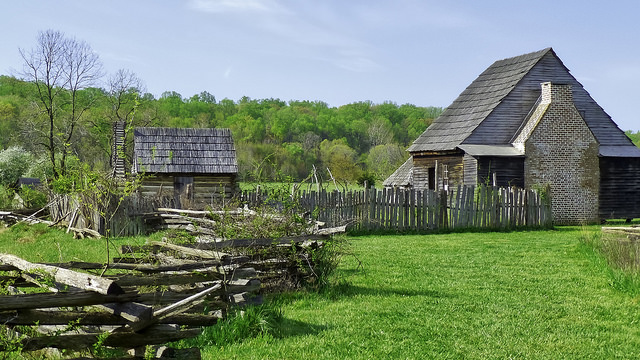Our Guide to Washington, D.C., Part II
Here we’ll be exploring National Parks Service units in Washington, D.C. that you will need to visit with a car, though it is possible to access a few via public transportation. The parks are listed here by location and then in alphabetical order, as they are in the extended DC area in Maryland and Virginia. You can find Part I one of the guide here.
MARYLAND
Antietam National Battlefield
The deadliest single day in all of the Civil War, Antietam represents the horrific start to a different level of war. Visit the Pry House Field Hospital Museum for a unique look at what was once state-of-the-art medical care.
Catoctin Mountain Park
The most northern D.C.-affiliated park, Catoctin Mountain Park is a modest but beautiful mountaintop park with a scenic drive and 25 miles of hiking trails. Take the short Blue Blazes Whiskey Still Trail to visit a historic still and learn more about the whiskey making business to the area.
Chesapeake and Ohio Canal National Historic Park
This park starts in Georgetown, but we prefer to get out of the city to truly appreciate the beauty and importance of this major transportation network of the 18th and 19th centuries. The Williamsport Visitor Center (north of D.C.) offers fantastic and free boat trips from Memorial Day to Labor Day, along the canal in a replica 1920’s boat.
Clara Barton National Historic Site
The final home of Clara Barton, founder of the American Red Cross, interprets her life and accomplishments. Guided interpretive tours of the unfurnished house occur at the top of every hour, Fridays and Saturdays from 1 p.m. to 4 p.m. You can learn more in nearby Glen Echo park, once a meeting place for the Chautauqua Assembly and later a mid-twentieth century amusement park—the NPS partners with Montgomery County to preserve and promote this unique cultural and historic location.
Fort Washington Park
This major defensive fort protected a path to the south of D.C. along the Potomac river that was used and readapted by the U.S. military from the early 19th century up until the end of World Word II. While the visitor center and grounds are open year round, the actual historic fort is only open seasonally, from early May to late October; stop off on your way to Piscataway Park.
Greenbelt Park
A small but mighty unit, Greenbelt Park is most famous as the closest National Parks Service campsite to Washington D.C.—only 13 miles from the White House! With over 170 campsites, there’s certainly room, but you’ll still want to reserve ahead of time, especially during peak summer months.
Monocacy National Battlefield
This site of the Civil War battle marks the site of the northern-most Confederate victory, as well as a key battle that delayed the Confederate advance long enough that Washington D.C. was reinforced by Union troops. The park has a self-guided car tour and several trails that cross through the battlefield; tie in a visit to nearby Antietam National Battlefield.
Piscataway Park
Piscataway Park was created in the 1950’s to preserve the natural beauty of the Potomac region during a period of rapid suburbanization. The National Colonial Farm is here, a working museum farm dedicated to keeping alive historic 17th century farming traditions.
Piscataway Park and National Colonial Farm, photo by F Delventhal / CC.
Potomac Heritage NST
This historic trail follows the Potomac and links to a network of National Scenic Trails north from Pittsburg to the mouth of the river in the Chesapeake Bay. Use the Potomac Heritage National Scenic Trail to see Frank Lloyd Wright’s Pope-Leighey House and nearby Mount Vernon, home to George Washington; the 17 mile portion from Mount Vernon to Theodore Roosevelt Island is paved and bicycle friendly.
Virginia
Arlington House, The Robert E. Lee Memorial
An early 19th century Greek Revival home (its most famous owner was Robert E. Lee), the home is located inside what is now Arlington Cemetery. The NPS says succinctly, “In a larger sense it exists as a place of study and contemplation of the meaning of some of the most difficult aspects of American history: military service; sacrifice; citizenship; duty; loyalty; slavery and freedom.“
George Washington Memorial Parkway
One of the great celebrations of the American motorway, George Washington Memorial Parkway is much more than a 25-mile driving tour, the Parkway links together many of the remarkable D.C. locations that are are listed here in this guide. Gravelly Point just north of Reagan National airport is a great place for a picnic to take in the D.C. skyline and watch the airplanes land and take off.
Manassas National Battlefield Park
The park preserves two Civil War battles waged here, a year apart from one another. Visiting is a sobering reminder of how far the war progressed in one year from 1861 to 1862—the relatively minor first battle can be toured on foot; the second battlefield eclipses and engulfs the first, requiring extensive driving.
Manassas National Battlefield Park ,photo by Derek Wright.
Prince William Forest Park
The southernmost and largest of the D.C. affiliated parks, Prince William Forest Park is a resplendent preserve of nature and beauty that can be explored via scenic drive, hiking and extensive bike trails. The park offers camping for both tents and RV’s along with seasonal (March-Nov) backcountry sites.
Wolf Trap National Park for the Performing Arts
See a live performance here, with a varied schedule of live music, theatre, dance and opera—there’s something for everyone. Shows run from May to September, and off-season the park offers options for hiking and picnicking.















